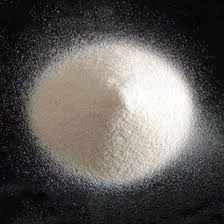
آگوست . 31, 2024 04:38 Back to list
High-Performance HPMC for Putty Powder - Premium Quality & Versatile Applications
HPMC for Putty Powder Enhancing Performance and Quality in Construction
In the realm of construction materials, putty powder holds a significant place, providing essential solutions for various application needs such as wall finishing, surface smoothing, and even as an adhesive for tiles. One of the key ingredients that enhance the properties of putty powder is Hydroxypropyl Methylcellulose (HPMC). This cellulose ether is widely recognized for its versatility and effectiveness in improving the performance of construction materials.
HPMC is a semi-synthetic polymer derived from cellulose, and it offers a unique combination of properties that make it particularly valuable in putty formulations. Its ability to modify viscosity, enhance workability, and retain moisture contributes to the superior performance of putty powder.
HPMC for Putty Powder Enhancing Performance and Quality in Construction
Additionally, HPMC enhances the thixotropic properties of putty powder. Thixotropy refers to the property of certain gels or fluids that become less viscous when subjected to shear stress or agitation. In practical terms, this means that when putty is mixed and applied, it flows easily, enabling smooth spreading. Once applied, the putty regains its thickness, preventing sagging or running down vertical surfaces. This enhances the overall user experience for construction professionals who rely on consistent application during their projects.
hpmc for putty powder

Another significant advantage of HPMC in putty formulations is its contribution to improved adhesion. When putty powder containing HPMC is applied to various surfaces, the polymer ensures that the material bonds effectively. This is particularly important when putting on surfaces that may be challenging to adhere to, such as tiles and concrete. Strong adhesion not only promotes durability but also extends the lifespan of the application, minimizing the need for repairs or maintenance over time.
Moreover, HPMC is also known for its anti-settling properties. In formulations where multiple components are mixed, there is a risk that heavier particles may settle at the bottom, leading to an uneven distribution of the active ingredients. By incorporating HPMC, manufacturers can prevent this settling, ensuring a consistent and homogeneous mixture throughout the product's shelf life.
In terms of sustainability, HPMC is considered environmentally friendly, as it is derived from renewable cellulose sources. Its application in putty powder aligns with the growing demand for sustainable construction materials, providing an eco-conscious choice for builders and contractors.
In conclusion, the integration of HPMC into putty powder delivers remarkable benefits that enhance its performance. From improved water retention and thixotropic behavior to enhanced adhesion and anti-settling properties, HPMC plays a crucial role in ensuring high-quality finishes and durability in construction applications. As the construction industry continues to evolve, the importance of such innovative additives will only increase, paving the way for more efficient and sustainable building practices.
-
Why HPMC is a Key Additive in Wall Putty Formulations
NewsAug.05,2025
-
Redispersible Powder in Decorative Renders: Function Meets Finish
NewsAug.05,2025
-
Redispersible Powder for Interior Wall Putty: Smooth Results Every Time
NewsAug.05,2025
-
HPMC’s Water Retention Capacity in Dry Mortar Applications
NewsAug.05,2025
-
HPMC Factory Contributions to Liquid Detergents
NewsAug.05,2025
-
How HPMC Factory Products Change Detergent Textures
NewsAug.05,2025







